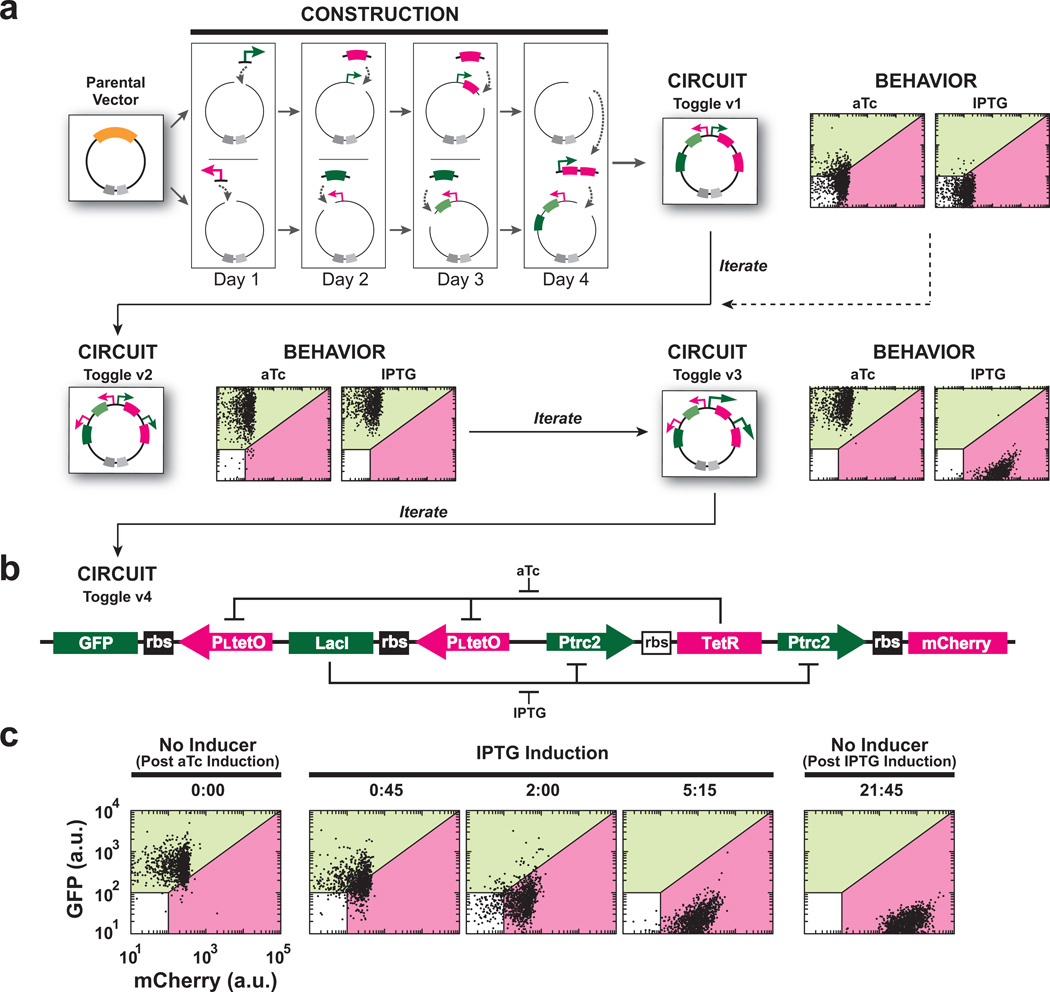Figure 2.
Construction and tuning of a bistable genetic toggle switch. (a) Representation of the construction and characterization-driven tuning of a genetic toggle switch. Each of the intermediate toggle constructs was induced overnight with either aTc or IPTG, and cells were assayed for expression of fluorescent proteins (GFP and mCherry) by flow cytometry. The Parental Vector contains an antibiotic resistance gene (dark grey) and an origin of replication (light grey). (b) Schematic of the final bistable toggle switch. (c) IPTG-induced switching and subsequent maintenance of the genetic toggle switch. A time-course of cells that harbor the circuit switching from the GFP state (0 hrs) to the mCherry state (0–5:15 hrs) through IPTG induction, and then maintained in the mCherry state when diluted into the no-inducer condition and grown overnight (21:45 hrs). Data were obtained by flow cytometry at the indicated times; n = 10,000 events per experiment.

